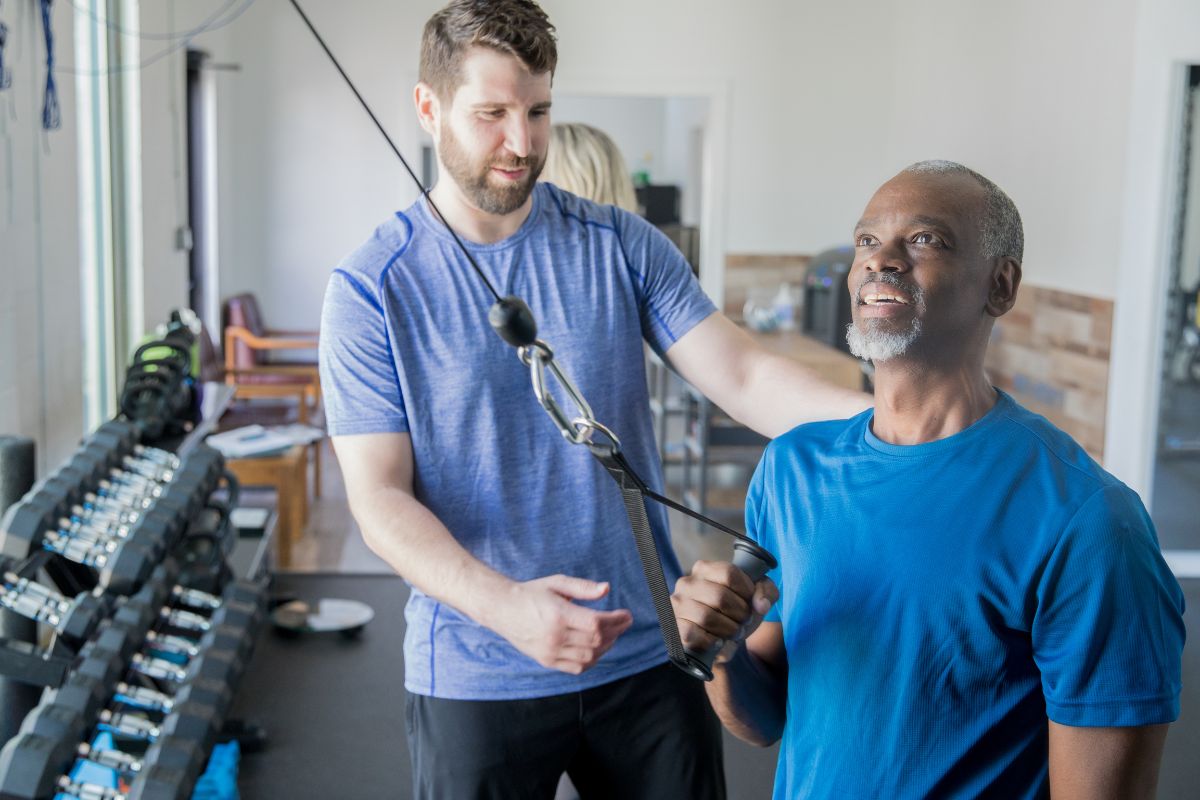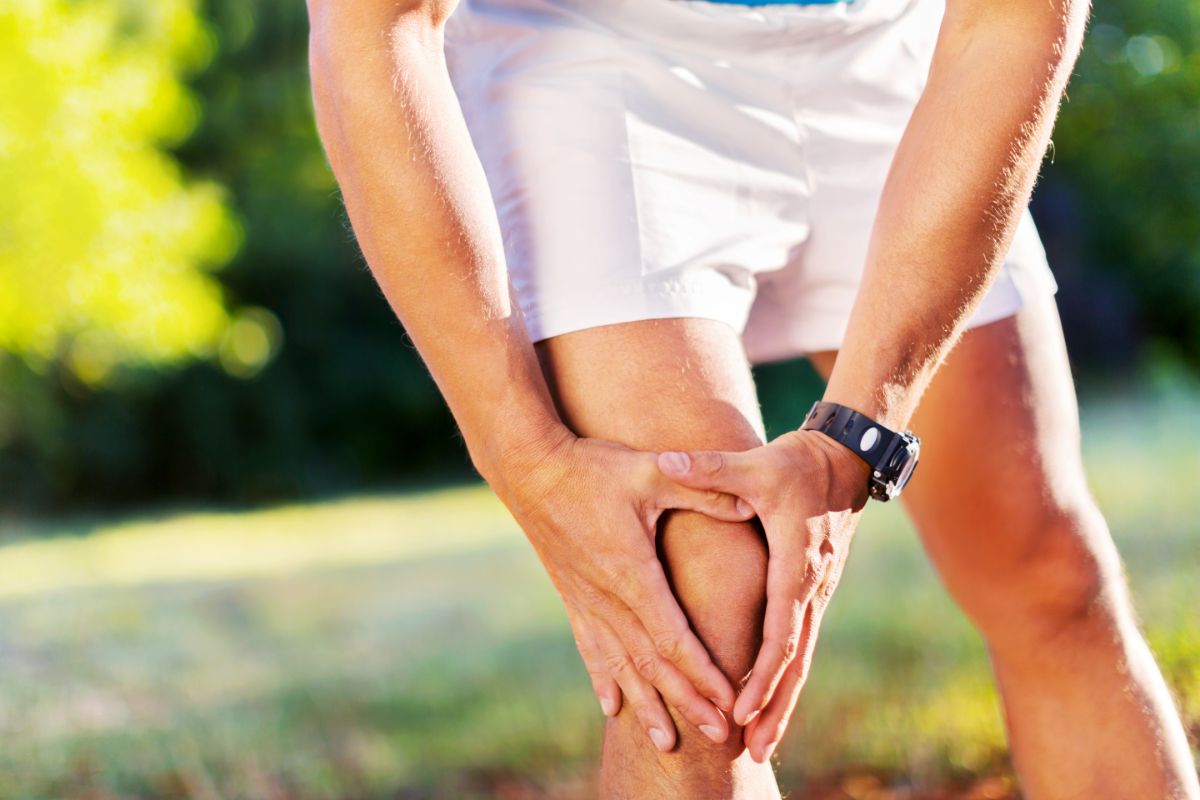Arthritis is a painful condition that affects joints and muscles and, if left untreated, can cause severe pain and disability which can have a negative impact on your overall well-being and quality of life.

Fortunately, there are solutions – exercise, in particular, has proven benefits for those suffering from arthritis. But can weight training really help? We took a closer look.
What Is Arthritis?
Arthritis is a common disease that causes inflammation and stiffness in the joints. The symptoms include joint pain, swelling, tenderness, and limited movement.
There are two main types of arthritis: osteoarthritis (OA) and rheumatoid arthritis (RA).
Osteoarthritis occurs when cartilage breaks down and wears away, causing bone to rub against bone, while rheumatoid arthritis is caused by inflammation of the synovial membrane, which lines the inside of the joints.
Weight training is a great way to strengthen muscles and bones and boost overall fitness and wellbeing – especially for those who suffer from arthritis.
In addition, weight training helps improve balance and mobility, which reduces the risk of falls.
However, it’s important to note that weight training does not cure arthritis. It may be helpful as part of an overall treatment plan, but should never replace medical advice.
Types of Arthritis
Osteoarthritis (OA), also known as degenerative arthritis, is the most common form of arthritis. This type of arthritis usually starts around age 40 and worsens over time.
Symptoms include pain and stiffness in the joints, particularly in the hands, knees, hips, and feet.
Treatment options include medication, injections, surgery, and lifestyle changes.
Rheumatoid arthritis (also called inflammatory arthritis) is a chronic autoimmune disorder that is usually characterized by inflammation of the lining of the joints.
People with rheumatoid arthritis often experience morning stiffness, fatigue, fever, and swollen joints.
The exact cause of rheumatoid arthritis isn’t clear, but many factors appear to play a role, including genetics, environmental triggers, and immune system dysfunction. Rheumatoid
arthritis typically affects women more than men.
There are two main types of rheumatoid arthritis: classic and polyarticular. Classic rheumatoid arthritis involves inflammation of one or more large joints, such as the wrists, elbows, shoulders, knees, ankles, or metacarpophalangeal joints (MCPs) of the fingers.
Polyarticular rheumatoid arthritis occurs when multiple small joints throughout the body become inflamed.
The condition is less severe and tends to affect younger people.
How Does Exercise Affect Arthritis?
A number of medical and scientific studies have suggested a link between regular movement and reduced pain and symptoms from arthritis, and exercise has been shown to reduce pain and improve function in people with arthritis.
In fact, research suggests that moderate-intensity aerobic activity such as walking three times per week for 30 minutes each session can significantly reduce pain and improve physical functioning among patients with RA.1 Moderate intensity also appears to be beneficial for individuals with osteoarthritis, although more research is needed to confirm this finding.
In addition to cardio, regular strength training can also benefit those with arthritis.
A study published in the British Journal of Sports Medicine found that resistance training twice weekly for 12 weeks improved muscle mass, strength, and functional performance in older adults with mild knee osteoarthritis, and suggested that this type of training could potentially help prevent further deterioration in joint health and increase overall mobility.
Another study published in the journal Clinical Rehabilitation showed that participants who combined aerobic and strengthening exercises experienced significant improvements in their ability to perform everyday activities.
This research seems to suggest that regular weightlifting offers a number of advantages to those suffering from arthritis, and there is no denying the advantages that regular workouts
can offer your general overall health and wellbeing.
Can You Get Joint Pain From Weightlifting?

While weight lifting can definitely provide some benefits for those suffering from arthritis, it’s important to note that there are certain risks associated with weight lifting.
For example, if you lift weights without proper instruction, you may develop injuries. If you’re not sure how to safely lift weights, consult your doctor before starting any new workout routine.
The good news is that most forms of weightlifting are safe for those with arthritis, provided they follow basic guidelines. Here are a few tips to keep in mind while working out:
- Always Warm-Up
It is crucial that you always take time to warm up before you start working out – and this includes strength and weight training. This will help prevent injury by increasing blood flow to your muscles and joints and reduce the risk of a pulled or strained muscle.
- Make Sure Your Form Is Correct
When performing squats, lunges, pushups, pullups, etc., make sure you maintain an upright posture, and always maintain the correct form when you are lifting weights. It is a good idea to book a few sessions with a trainer when you start lifting – this will ensure that you are maintaining the correct form and staying safe while you work out.
- Lift Slowly
If you’re just beginning to learn how to lift weights, don’t try to lift too much at once. Start off slowly, and build up gradually over time. As you get stronger, you’ll find yourself able to lift heavier and heavier amounts. Once again, a trainer can be helpful here to ensure that you are lifting safely.
- Perform Proper Rest Periods
Don’t overdo it! Make sure you give yourself enough rest periods during which you do nothing but relax and recover. Take breaks every 20 minutes or so, and focus on stretching and breathing deeply.
- Incorporate Cardio into Your Workouts
Many people believe that weightlifting alone provides all the benefits of exercise, and that cardio isn’t necessary. By combining cardio with weightlifting, however, you can burn more calories than either activity would individually, and improve your cardiovascular system as well.
Final Thoughts
Arthritis can be a tricky condition to manage, but there is good news: it does not have to rule your whole life.
By adding regular exercise and weight training into your routine, you will keep your bones and muscles strong and flexible, and alleviate the pain and symptoms that come with arthritis, while also maintaining great overall health and wellbeing.
- Understanding Male Reproductive Health: A Complete Guide - February 2, 2025
- Simple Healthy Skin Habits for Radiant Skin - December 6, 2024
- Unlocking the Connection Between Nutrition and Mental Health - December 3, 2024








